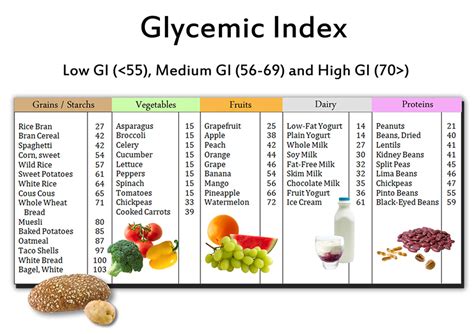The glycemic index (GI) is a measure of how quickly the carbohydrates in a particular food raise blood sugar levels after consumption. It’s an essential concept for individuals managing diabetes, trying to lose weight, or simply aiming to maintain a healthy diet. Understanding the GI of different foods can help you make informed choices about what to eat and when, potentially leading to better blood sugar control and overall health.
What Does the Glycemic Index Measure?
The glycemic index is a scale that ranks foods from 0 to 100 based on how much they increase blood sugar levels after eating. Pure glucose is used as the reference point and is set at a GI value of 100. Foods with a high GI value are rapidly digested and absorbed, causing a quicker and higher peak in blood sugar levels. Conversely, foods with a low GI value are digested more slowly, resulting in a gradual and lower peak in blood sugar.
Importance of Glycemic Index
The GI is particularly important for people with diabetes, as it can help them manage their blood sugar levels more effectively. However, its benefits extend to the general population as well. By choosing low-GI foods, individuals can:
- Manage Weight: Low-GI diets can help with weight loss and maintenance, as they tend to be more filling and reduce the likelihood of overeating.
- Improve Blood Sugar Control: For diabetic patients, understanding which foods cause spikes in blood sugar can help in planning meals to keep their condition under control.
- Reduce Risk of Chronic Diseases: Consuming low-GI foods has been associated with a reduced risk of heart disease and certain types of cancer.
GI Food Chart Guide
Below is a simplified guide to categorize foods based on their glycemic index:
Low GI (0-55): These foods are digested slowly and cause a gradual rise in blood sugar levels. Examples include:
- Most fruits (e.g., apples, berries)
- Non-starchy vegetables (e.g., broccoli, spinach)
- Whole grains (e.g., brown rice, quinoa)
- Legumes (e.g., lentils, chickpeas)
- Nuts and seeds
Medium GI (56-69): These foods have a moderate effect on blood sugar levels. Examples include:
- Whole wheat bread
- Basmati rice
- Sweet potatoes
- Whole grain pasta
High GI (70 and above): These foods cause a rapid increase in blood sugar levels. Examples include:
- White bread
- White rice
- Sugary snacks and drinks
- Potatoes
- Refined grains
Factors Affecting Glycemic Index
The GI of a food can be influenced by several factors, including:
- Ripeness: Riper fruits tend to have a higher GI.
- Cooking Method: Overcooking can increase the GI of some foods.
- Type of Starch: Different types of starch (e.g., amylose vs. amylopectin) affect digestion rates.
- Presence of Fiber and Fat: These can slow down digestion, reducing the GI of a food.
- Portion Size: Even low-GI foods can cause a spike in blood sugar if consumed in large amounts.
Incorporating GI into Your Diet
To make the most of the glycemic index, consider the following strategies:
- Balance Your Meals: Combine low-GI foods with moderate to high-GI foods to manage the overall glycemic impact of your meals.
- Choose Whole Over Refined: Whole, unprocessed foods generally have a lower GI than their refined counterparts.
- Be Mindful of Portion Sizes: Even healthy foods can negatively impact blood sugar levels if overconsumed.
- Stay Hydrated: Adequate hydration can help regulate blood sugar levels and improve overall health.
In conclusion, understanding and incorporating the glycemic index into your dietary choices can be a powerful tool for managing blood sugar levels, promoting weight loss, and reducing the risk of chronic diseases. By being aware of the GI values of different foods and how they can affect your body, you can make more informed decisions about what you eat, leading to a healthier and more balanced lifestyle.



